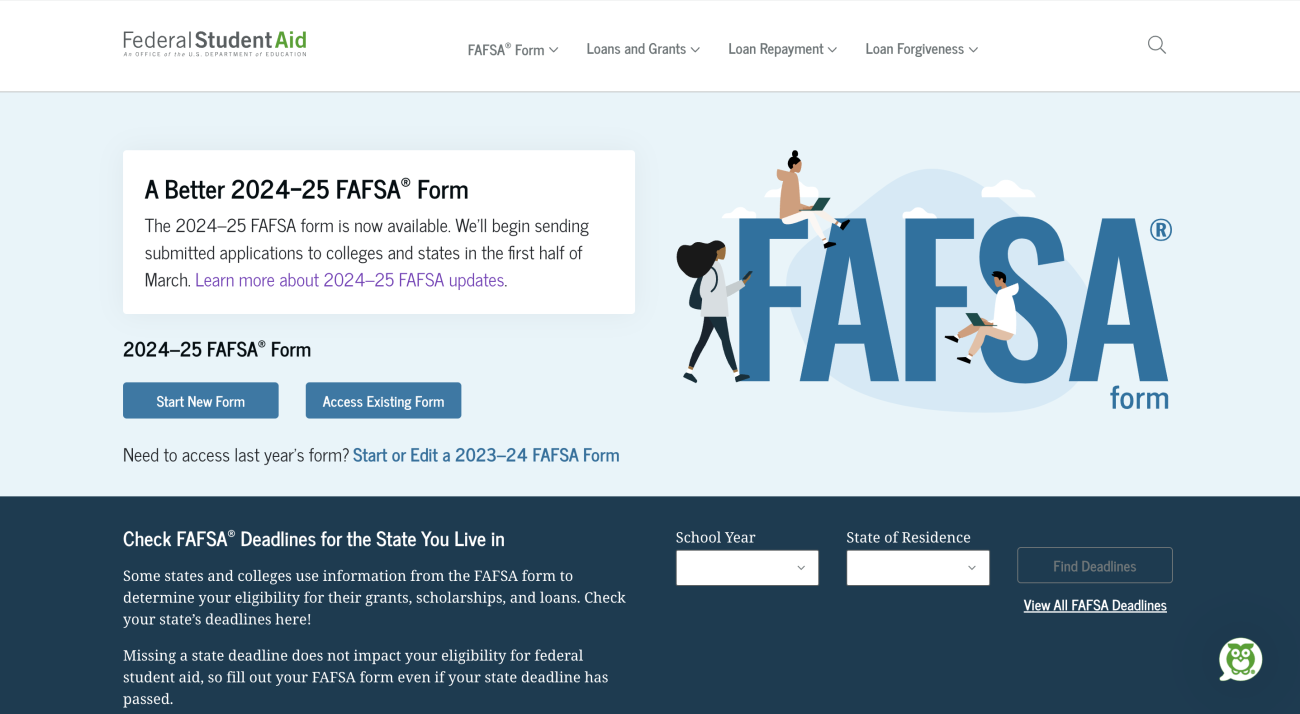More FAFSA problems: What Michigan families need to know about financial aid

- The federal government estimates that 30% of student financial aid applications have processing or data errors
- The errors make it hard for schools and students to get an accurate picture of a student’s college costs
- Michigan high school seniors and students across the country are still waiting for financial aid offers
In a college financial aid cycle marked with delays and miscalculations, the U.S. Department of Education delivered another blow Tuesday.
The department announced that an estimated 30% of applications for college financial aid were affected by unexpected processing or data errors.
The federal government says it’s working to resolve those issues on its own, but the errors mean current and potential college students will have to wait longer to get an accurate picture of what it will cost to attend college next year.
Separately, as many as 16% of all applicants will likely need to correct other mistakes on their applications. But the federal government said Tuesday it won’t allow students to make those corrections until early next week.
It’s all part of a messy process in what was supposed to be a simpler year for filing the Free Application for Federal Student Aid (FAFSA) using a new form.
Related:
- Michigan FAFSA challenges: High school seniors slow to fill out form
- How to get free tuition from Michigan colleges and universities
- Wayne State, Central Michigan push back deadlines because of FAFSA delay
The federal government said this week it is working to fix the application processing and data errors and suggested schools could “exercise their judgment” to use the original student records to make financial aid offers.
But schools and states will be required to revise their offers if the updated student records result in more financial aid eligibility.
“Families want more security in knowing what college will cost and so this is another blow in being able to truly understand the financial responsibility of the family,” said Katie Condon, vice president of enrollment management at Eastern Michigan University.
The delays mean students have less time to enroll in a payment plan, seek out private loans or plan for a summer job to help pay for college, Condon said.
“At the end of this is a bill that has to be paid by families, and this is less planning time for the families,” she said.
To help students and families navigate the process, Bridge Michigan has compiled a list of resources for FAFSA applications.
If you have any questions about the college financial aid process, email Education Reporter Isabel Lohman at ILohman@bridgemi.com.
Why is the FAFSA process different this year?
Congress directed the Department of Education to update the FAFSA form, which students and families fill out with information that the federal government, states and schools use to determine if students are eligible for grants, scholarships, work study and loans.
The stated goal was to create a simpler process for students and their families. But the updated form's rollout was delayed, inflation figures had to be corrected and some students were initially unable to fill out the form at all.
The rocky rollout has apparently discouraged applications that educators say are vital for students, and it’s complicated the state’s push to boost college enrollment.
Only 33% of Michigan high school seniors have submitted the form through March 29 compared to 44% of seniors last school year, according to the National College Attainment Network.
Among all states, Michigan ranks 29th for FAFSA applications submitted by high school seniors.
What do the delays mean for students?
College financial aid officers and high school counselors are still encouraging students to fill out the application. Once a student has submitted the FAFSA form, it’s largely a waiting game.
Dan Hurley, CEO of the Michigan Association of State Universities, told Bridge that the state’s public universities are aiming to release financial aid letters that detail what aid students are eligible for by May 1.
Because of the errors announced Tuesday, the federal government will have to reprocess many applications.
That’s “disappointing but not surprising” given other issues that have arisen this year, said Nicole Boelk, director of financial aid and scholarships at Oakland University.
“It’s disappointing because we had hoped this would be a smoother process with families,” she said, telling Bridge she plans to create financial aid offers for new students in the next few weeks.
Then, the school will issue corrected financial aid offers for students who had to have their financial aid information reprocessed. The university does not have an enrollment deadline.
“We understand that families really are in a situation where they need to make some solid decisions,” Boelk said. “And we want to get as accurate information as possible based on what we have from the department of education.”
The FAFSA process also affects current college students. Boelk said returning students will get their financial aid offers once the federal data finishes reprocessing applications with errors.
Oakland has committed to providing students with the same level of university-specific scholarships and grants from the previous year, regardless of the new FAFSA application process.
At EMU, Condon said she anticipates returning students will get their financial aid packages in mid-May, which is typical for a given school year.
Why is the form so important?
The FAFSA is required for students to access federal programs that provide funds students don’t have to pay back or loans they do have to repay.
It’s also the gateway to the Michigan Achievement Scholarship, which provides up to $2,750 a year for community college, $4,000 a year for private college and $5,500 a year for public university in Michigan for recent high school graduates.
Many Michigan colleges and universities also provide tuition-free guarantees for students who meet certain family-income requirements, as determined by the FAFSA.
What can students do right now?
If you’re a student or future student, you can fill out the form at fafsa.gov. If you have submitted a form but need to make changes, you will have to wait longer.
“Our goal is to make student corrections broadly available early next week,” the department said Tuesday. Students will be able to update their forms on studentaid.gov.
The department estimates that “as many as 16%” of FAFSA applications require a student correction.
Most of these corrections are needed from one of six issues including the form is missing a student or parent’s signature or the form is missing an applicant’s consent for the federal government to retrieve tax information.
Experts recommend talking to a school counselor or a financial aid staffer at a college or university. The U.S. Department of Education also has a chat feature and phone line to help you with questions.
The Michigan Department of Lifelong Education, Advancement, and Potential has virtual presentations on the FAFSA, state scholarships and explanations of eligibility requirements for different scholarship and grant programs.
Michigan Education Watch
Michigan Education Watch is made possible by generous financial support from:
Subscribe to Michigan Education Watch
See what new members are saying about why they donated to Bridge Michigan:
- “In order for this information to be accurate and unbiased it must be underwritten by its readers, not by special interests.” - Larry S.
- “Not many other media sources report on the topics Bridge does.” - Susan B.
- “Your journalism is outstanding and rare these days.” - Mark S.
If you want to ensure the future of nonpartisan, nonprofit Michigan journalism, please become a member today. You, too, will be asked why you donated and maybe we'll feature your quote next time!






